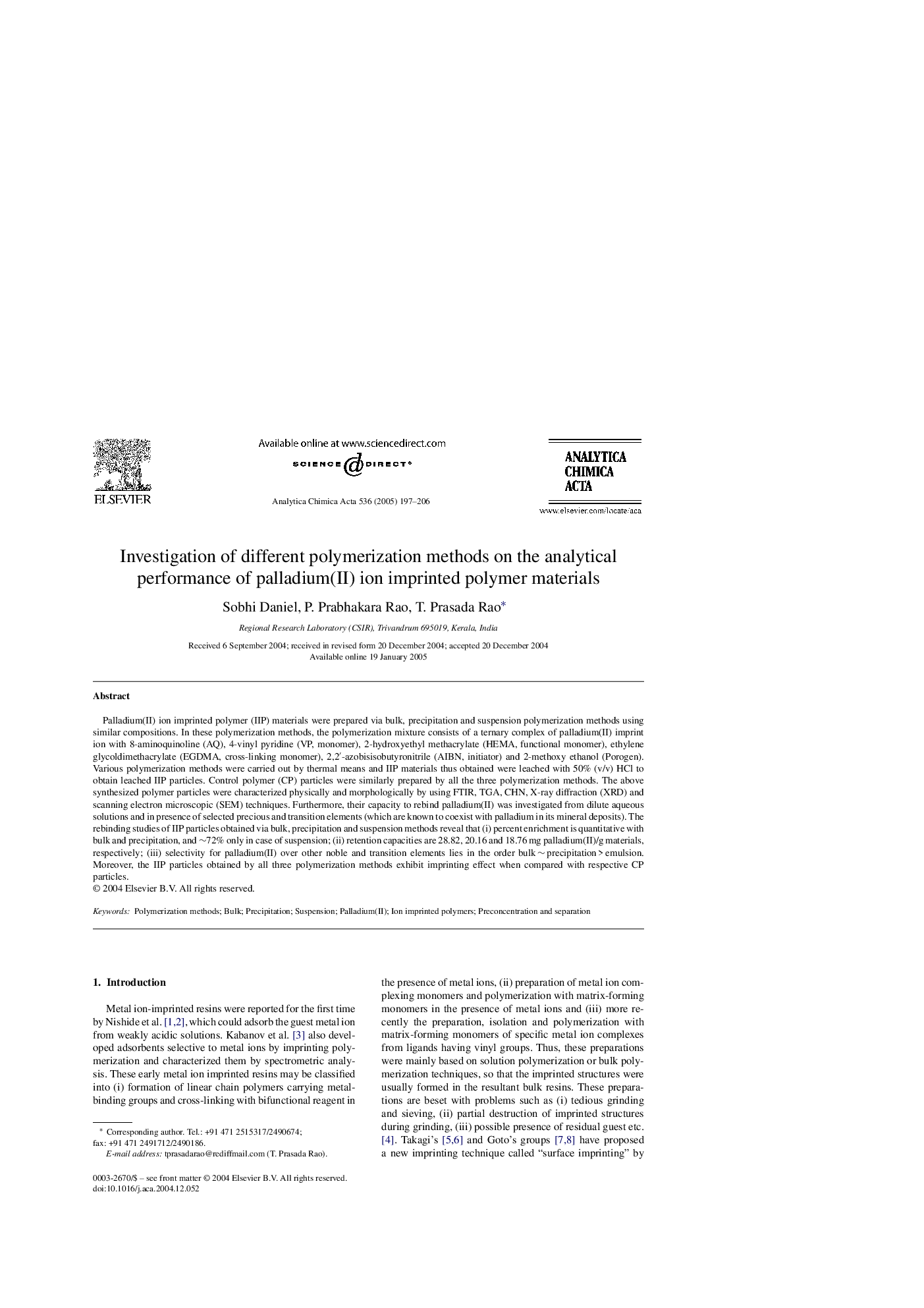| کد مقاله | کد نشریه | سال انتشار | مقاله انگلیسی | نسخه تمام متن |
|---|---|---|---|---|
| 9743840 | 1491200 | 2005 | 10 صفحه PDF | دانلود رایگان |
عنوان انگلیسی مقاله ISI
Investigation of different polymerization methods on the analytical performance of palladium(II) ion imprinted polymer materials
دانلود مقاله + سفارش ترجمه
دانلود مقاله ISI انگلیسی
رایگان برای ایرانیان
کلمات کلیدی
موضوعات مرتبط
مهندسی و علوم پایه
شیمی
شیمی آنالیزی یا شیمی تجزیه
پیش نمایش صفحه اول مقاله

چکیده انگلیسی
Palladium(II) ion imprinted polymer (IIP) materials were prepared via bulk, precipitation and suspension polymerization methods using similar compositions. In these polymerization methods, the polymerization mixture consists of a ternary complex of palladium(II) imprint ion with 8-aminoquinoline (AQ), 4-vinyl pyridine (VP, monomer), 2-hydroxyethyl methacrylate (HEMA, functional monomer), ethylene glycoldimethacrylate (EGDMA, cross-linking monomer), 2,2â²-azobisisobutyronitrile (AIBN, initiator) and 2-methoxy ethanol (Porogen). Various polymerization methods were carried out by thermal means and IIP materials thus obtained were leached with 50% (v/v) HCl to obtain leached IIP particles. Control polymer (CP) particles were similarly prepared by all the three polymerization methods. The above synthesized polymer particles were characterized physically and morphologically by using FTIR, TGA, CHN, X-ray diffraction (XRD) and scanning electron microscopic (SEM) techniques. Furthermore, their capacity to rebind palladium(II) was investigated from dilute aqueous solutions and in presence of selected precious and transition elements (which are known to coexist with palladium in its mineral deposits). The rebinding studies of IIP particles obtained via bulk, precipitation and suspension methods reveal that (i) percent enrichment is quantitative with bulk and precipitation, and â¼72% only in case of suspension; (ii) retention capacities are 28.82, 20.16 and 18.76 mg palladium(II)/g materials, respectively; (iii) selectivity for palladium(II) over other noble and transition elements lies in the order bulk â¼Â precipitation > emulsion. Moreover, the IIP particles obtained by all three polymerization methods exhibit imprinting effect when compared with respective CP particles.
ناشر
Database: Elsevier - ScienceDirect (ساینس دایرکت)
Journal: Analytica Chimica Acta - Volume 536, Issues 1â2, 22 April 2005, Pages 197-206
Journal: Analytica Chimica Acta - Volume 536, Issues 1â2, 22 April 2005, Pages 197-206
نویسندگان
Sobhi Daniel, P. Prabhakara Rao, T. Prasada Rao,